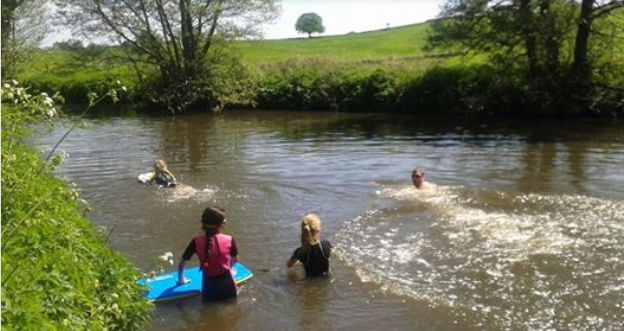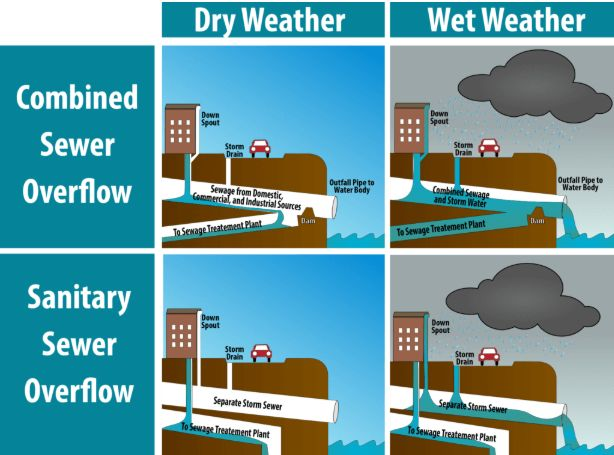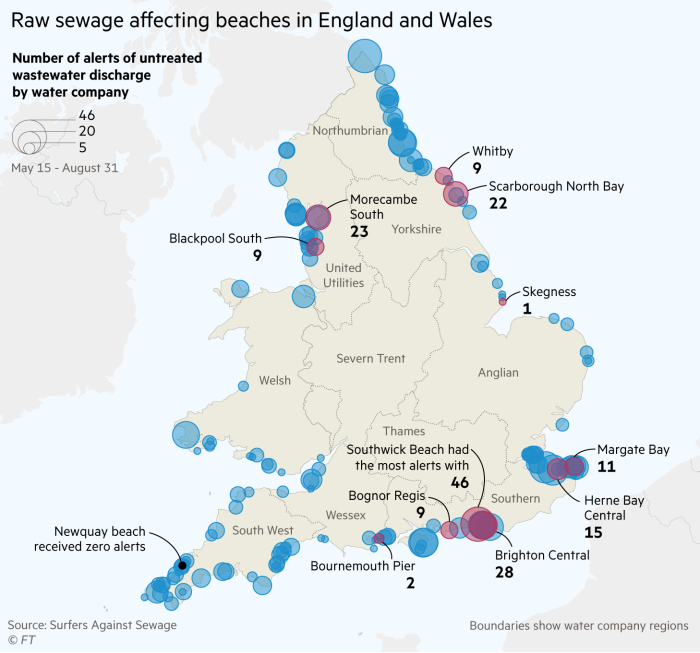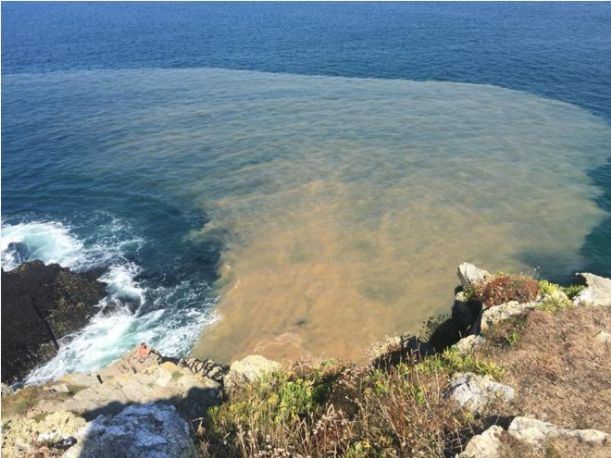
As the short summer is now upon us, people are heading west to our glorious tourist hotspots for a Covid-19 safe staycation, in search of lazy days on the beach or the quiet of the countryside, and maybe enjoying a punt down the river or letting the kids play in the streams. The influx of travellers will begin to redress the shortfall in footfall and the economic damage done to the tourism sectors, but it has also brought a growing focus on worries regarding the cleanliness of our waterways and seashores.
Recent reports by the Rivers Trust and the Guardian looked into the practices of our water authorities. The release of raw sewage into rivers and the sea has become of increasing concern to many. The two companies in our region, Wessex Water and South West Water, have fared poorly, with most ratings for the quality of sea and fresh water failing to get beyond the “good” state.

According to an article in the Guardian, monitoring shows that in 2019 companies nationwide released sewage from 6,508 Combined Sewage Overflows (CSOs) into inland waterways and rivers for 1.53 million hours. Wessex Water has recorded 13,876 occurrences totalling 107,404 hours of effluent released over the year and South West Water has monitored 36,150 hours of raw sewage released 7,850 times.
The Environment Agency (EA) relies on water companies to self-monitor and report the use of CSOs – where raw untreated sewer waste flows into rivers and streams under EA licence. This is in exceptional conditions, when sewage plants risk overflowing due to flood water. Ashley Smith of Windrush Against Sewage Pollution has said this is “a licence to pollute” which is propping up failed infrastructure. Wessex Water asserts that this only happens in exceptional conditions and that the sewage would be well diluted by the volume of water. Water UK said on behalf of South West Water “There’s also action we can all take in our day-to-day lives to help safeguard our rivers and waterways, such as helping to prevent blockages ir fatbergs clogging up sewers.”

South West Water and Wessex Water currently have monitors on approximately 75 per cent of their CSOs. However, both need to implement the remaining monitors over the next few years, way past the initial March 2020 completion deadline (Wessex now suggests 2023 as its target).
Whilst recent reports of visual waste in coastal areas often occur during out-of-season use, less waste is noted and recorded from inland rivers and streams. This means that inland waterways could be more polluted, and therefore more dangerous to use, than previously thought and becoming increasingly so each year.
At the end of January 2020 in a Cornwall Live article, surfer Mitch Holmes from Penzance, became seriously ill with a temperature and had to be put on an antibiotic drip shortly after taking a dip in the water in Porthleven with a small cut on his arm. “A lot of mates say they frequently see turds and toilet paper floating around the pier. So, I’m pretty sure that’s where the infection has come from.”
It is no secret that Britain was labelled the “Dirty Man of Europe” for decades due to the poor state of the beaches and waterways caused by the presence of raw sewage and other pollutants. Although the Government said in 2017 that the quality had improved, only 16 per cent of England’s rivers, lakes, estuaries and coastal waters are of a high or good status, which represents a decline of 25 per cent over the last decade.
Contact with untreated sewage can lead to many illnesses. To add to that, this year scientists are now warning of increased concern due to the possible presence of the Covid-19 virus in faecal matter.
A spokesperson for Surfers Against Sewage (SAS) said that, while they did not want to be alarmist, they are seeing increasing evidence of raw sewage in the sea. SAS have a Surfers Against Sewage App that enables you to check on the quality of beaches during the peak season.

In the summer of 2018, the Environment Agency had concerns about South West Water’s progress. An Environment Agency report in 2018 recommended that South West Water urgently improved its performance, citing it as the poorest performing company that year, with the worst record on pollution incidents. It appears little has improved in the subsequent few years. On the whole, efforts towards improvements have declined over the last ten years and there is little that suggests dramatic change for the better any time soon.
Known discharges into the south western counties’ inland waterways have been collated in this interactive map “Is My River Fit To Play In?”, which has been produced by The Rivers Trust in collaboration with the Guardian. It shows the types of waste water that were released into the watercourses in 2019 and for how many hours.
Problems are blamed on centuries-old, poor pipework and infrastructure with the excuse that addressing these requires major works. But is our government reducing or even disregarding standards, regulations and legislation? Are water companies more concerned with their profits than our environment and human health? Will blue flag beaches dwindle and disappear with no accountability for safety in the future, leaving the water companies with carte blanche to pollute more and more? Will we just have to live with the increase in raw sewage in our public waterways? How much better it would be if some of those profits could be invested in water quality, allowing us to carry on enjoying days out at the seaside, paddling about in our brooks and streams, or fishing and swimming to our hearts’ content in our beautiful lakes and rivers.
Safe swimming and happy holidays, everyone!





